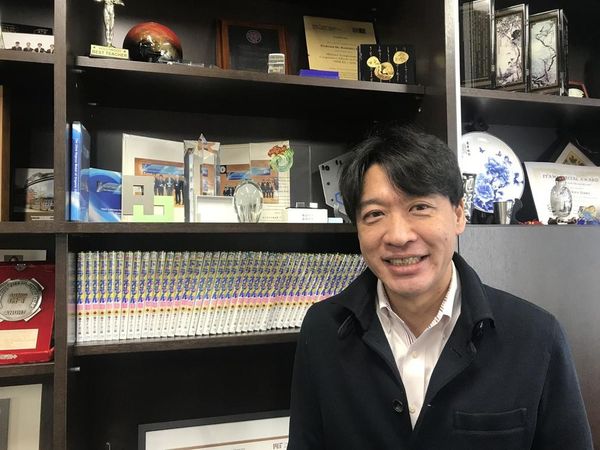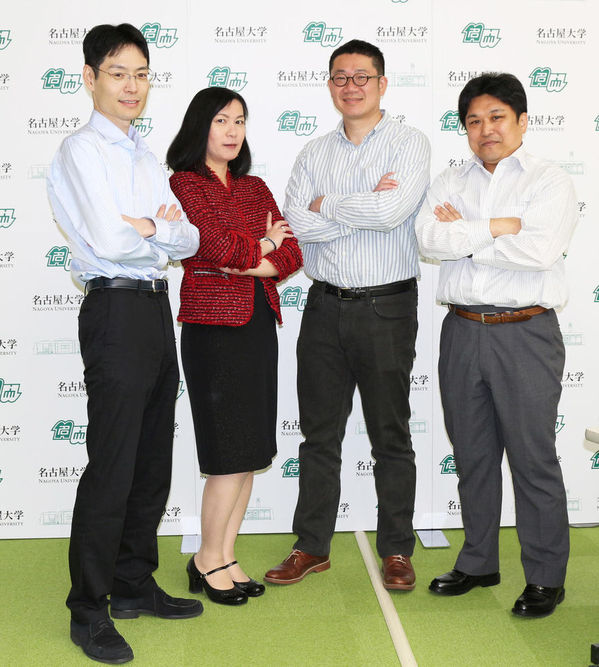We hear about the merging of disciplines, but in reality things are not so simple. There is no guarantee of achievements if researchers from different fields are just brought together to be in the same place. The Institute of Transformative Bio-Molecules (ITbM) at Nagoya University could be seen as a rare example of success in this respect. It is a World Premier International Research Center (WPI) Initiative under Japan's Ministry of Education, Culture, Sports, Science and Technology (MEXT). One of nine centers that exist today, it started in 2013, five years after the first ones were created. It is one of the youngest siblings in the "family" and has only half the budget of the others, but it has already produced several major research outcomes, and has received top level recognition. Two more centers will be launched this spring, and we could say that ITbM has grown into a proud elder brother.
According to the ITbM's Director, Prof. Kenichiro Itami, the Institute merged disciplines in which Meidai already had strengths, such as chemistry and plant sciences, and the combination could be called "Nagoya Science." But until just five years ago when it was launched, researchers had seemed not to know what others were working on at the same campus or even in the same School of Science. What changed things?

Prof. Kenichiro Itami's lab has a full set of Doraemon comic books. His dream is to use molecules to create all of that popular cartoon character's gadgets and magic tools, and he jokes the series is like a textbook for him.
An announcement of research findings this January really demonstrates the power of this merging of disciplines. It was about research by Prof. Keiko Torii and colleagues relating to auxin, an important plant hormone.
Auxin itself is just a small molecule with a very simple structure. But it controls the growth of plant roots, stems and flowers, and makes plants grow toward light. It can be found everywhere and acts differently depending on where it is in the plant. Like a tiny wizard, its mechanisms and functions wherever it appeared were enveloped in mystery.
The research group synthesized a convex auxin molecule and a receptor with a concavity or hole that fit the bump exactly. If they incorporated the hole receptor at the target location of a plant, it would not respond to natural auxin, and only react to the synthesized auxin with the bump. With this bump-and-hole strategy (convex and concave design) the pathway to more precise understanding of the various functions of auxin opened up for the first time. By applying this method, they could pinpoint exactly how auxin was behaving when sprouts germinated in the dark rapidly grew toward light. This behavior was what Darwin discovered more than 130 years ago and became the key to the later discovery of auxin. They found answers to the mystery about it.
Auxin is like a superstar in plant science. Torii recalls how the bump-and-hole strategy created quite a stir when they announced it at an international conference last summer.
Not only did they open the path to research. Synthetic auxin is widely used in applications to ripen fruit and as herbicide, but it is difficult to use because it behaves very differently depending on location. For example, to ripen fruit, auxin must be applied to each individual flower. But with the bump-and-hole strategy, it is theoretically possible to affect only selected fruit even if the auxin is sprayed aerially.

Auxin research group. From left, Naoyuki Uchida, Keiko Torii, Shinya Hagihara and Koji Takahashi. They have diverse backgrounds: pharmacy, biology, engineering, and agriculture.
So, how did that achievement come about? ......>>read more on the Meidai Watch